Kundalini Yoga to Dissolve the Barriers of Fear
Each of us has amazing potential for creating health, happiness, love, and a life of fulfillment. Deep in our hearts, we know we have the ability to activate and generate a life of our highest calling. The question is: Are we allowing the magnificent brightness of our true selves to shine, or are we hiding the radiance we were born with? Just as a diamond needs light to sparkle, our own true self needs the release of its inner light to be fulfilled.
This book is about clearing our energetic restrictions so our true selves shine as wonderfully as they can, in accord with our natural, inherent ability. The ancient practices of kundalini yoga are incredibly effective tools in this modern age for activating the elusive, hidden release of magnetism we are born with. The exercises open up energy pathways within our body, so we can experience vibrant health, abundance, love, empathy, intuition, and an expanded sense of connection with others.
Many people are experiencing a tangible soul-level drive for self-actualization. It feels like a voice deeply connected with the center of our being that is waiting to be heard. But although we feel it calling inside, we suppress it with self-limiting beliefs, and our unique brilliance remains hidden beneath layers of politeness and emotional armor. We may distract ourselves with our busy lives, stifle our yearnings, and go to sleep feeling so unfulfilled night after night that we become used to it. There are a hundred ways to hide the sensitive, beautiful nature of who we are.
In this era, many of us are noticing an inner voice persistently reminding us to leave behind our fears and step into the magnificence that we naturally possess. And the urging, calling, and whispering of this inner voice can no longer be ignored. If you have picked up this book, chances are that you are hearing it yourself.
The Secret Yoga of Energy
Kundalini yoga is an ancient, time-tested system of exercise and meditation that boosts our energy, synchronizes the impulses of our nervous system, releases energetic blockages, balances our hormones, and uplifts our attitude to allow the pure radiance of our authentic self to shine. While other branches of yoga focus primarily on physical postures, kundalini yoga focuses on how the postures alter our energy and mind-set. Postures, movement, breathing, meditation, mantras, and lifestyle come together to bring about remarkable transformations of personal energy. The term kundalini refers to the concentrated living energy that opens up our potential. It is an energy that is dormant yet calls us to be awakened within. Once activated, it permeates us, energizes our cells to bring health and vitality, and connects our consciousness with the infinite. The techniques of kundalini yoga were developed over the course of thousands of years and are highly effective tools for opening up our energy pathways so the right amount of energy at the right frequency can flow smoothly through our entire being.
Kundalini yoga works on the principle that our physical body and our energy move hand in hand. What we do with our body has a parallel effect on our energy, and, likewise, what we do with our energy has a parallel effect on our body. For example, tightness in our hamstrings is actually a blockage in the energy that otherwise would be flowing through that area of our body. We call that tightness an opacity because it is blocking the flow of inner light. Using the ancient techniques of kundalini yoga to stretch the muscle or move a limb through the energy field that surrounds our body, we can release the corresponding blocked-up energy. Our inner light can then start flowing into an area where it was restricted before. The resulting effect on our body and mind is absolutely profound.
Not only does the muscle itself become more limber, but our consciousness shifts, our mind becomes clearer, and the new energy optimizes our functioning at the genetic level. As the light flows through our energy field, our awareness comes alive. Our energy level soars, and, like a flower emerging from the soil after a long, cold winter, we feel alive and hopeful.
Kundalini yoga was kept secret in India for thousands of years, taught only to devotees who were deemed worthy. In the 1960s, Yogi Bhajan moved from his home country of India to the United States. He began teaching kundalini yoga as a technology for self-improvement, and it quickly became popular. He authored more than thirty books and traveled extensively, teaching kundalini yoga around the globe until his passing in 2004. The authors have studied kundalini yoga extensively. In this book, for historical accuracy, we have sourced the exercises so you can see whether an exercise was taught by Yogi Bhajan, is a classic from the ages, or is a visualization we bring to help explain a topic.
The Kundalini Spirit
Practicing kundalini yoga often results in a natural sensation of oneness with a universal force greater than our limited sense of self. Yet kundalini yoga is not a religion, can be practiced by anyone with any spiritual belief, and does not require any particular spiritual philosophy. It is typical for the practices to enhance one’s feelings of spirituality, whether you belong to a formal religion or not. Flashes of insight, cosmic breakthroughs, tears of joy, and sobs of surrender are normal occurrences when the wondrous flood of our own energy is finally allowed to emerge through the layers of shielding we have put up all our lives. We encourage you to allow yourself to be swept up in the gift of spiritual experience rather than resisting out of fear. In fact, it is high time to give up the fear of your own brightness. Throughout this book, we use the terms God, the infinite, spirit source, and the universe to reflect the oneness of universal spirit in kundalini yoga. However, these are simply terms, and you are invited to carry the sense of spirit that works for you from this book into your life while leaving the rest behind.
You Are Invited
And the day came when the risk to remain tight in a bud was more painful than the risk it took to blossom.
—ANAÏS NIN
We all have a choice: to access the core of light that our soul has been yearning to express, opening our inner passages to allow our luminescence fully into our life, or to hide our unique way of shining behind a facade of social acceptance that we often have spent many years building. When we make the choice to uncover our true self, kundalini yoga provides exceptional tools to help us. If we practice with courage, vulnerability, and dedication, we are able to entertain a calm, centered power far beyond the ordinary.
We are inviting you to follow the path of least resistance—the path of flow. By removing energetic blocks and aligning our personal authenticity with the grace of the universe, we take the first step on the path of miracles. We invite you to begin your journey into the light of your own being.
Courage to Shine
If we honestly ask ourselves what in our day-to-day life prevents us from expressing the pure love at the core of our being, the answer is always fear. We hide our true selves to fit in, to be polite, and to avoid offending anyone. Rather than encouraging ourselves to transform, we find comfort in conforming to a world that is struggling. To break free of our challenges, we must be willing to live in our authentic expression of truth. This is our “Sat Nam,” the genuine truth of our manifestation vibrating at its highest frequency.
We are a new creation. All of us. It may be beyond our state of comprehension to acknowledge this in our minds, but our hearts know this truth. We are glowing and growing as a species, and it is essential that we do not fall back into entrenched patterns of fear. The inner light we tap into in quiet moments of connection to the soul is a reminder of the love the universe feels for us. Sometimes all we need is a few minutes to bring ourselves back into the quiet connection.
Kundalini Yoga to Dissolve the Barriers of Fear
Most of the things we fear are not real. Most of the things we fear never in fact happen. Fear is an emotion that gets stuck in the mind and resonates in our aura. It stimulates our sympathetic nervous system to go on high alert, and this takes a long time to settle back out of. The response to fear is hardwired into us from our cave person evolution, but the calling of the modern age is how to be courageous in living our truth as spiritual beings while we still carry the genes for survival from tiger attacks in every cell of our body.
The following set is a quick and potent one that works on releasing accumulated effects of fear that constrict the flow of energy through the life nerve, vagus nerve, and aura. It helps shake off the energetic debris that holds us back from living to our highest, fullest potential.
1 Lie on your back. Lift your left leg up in the air and shake it vigorously for one to three minutes. Lower it down. Lift the right leg up and shake it vigorously for the same length of time.
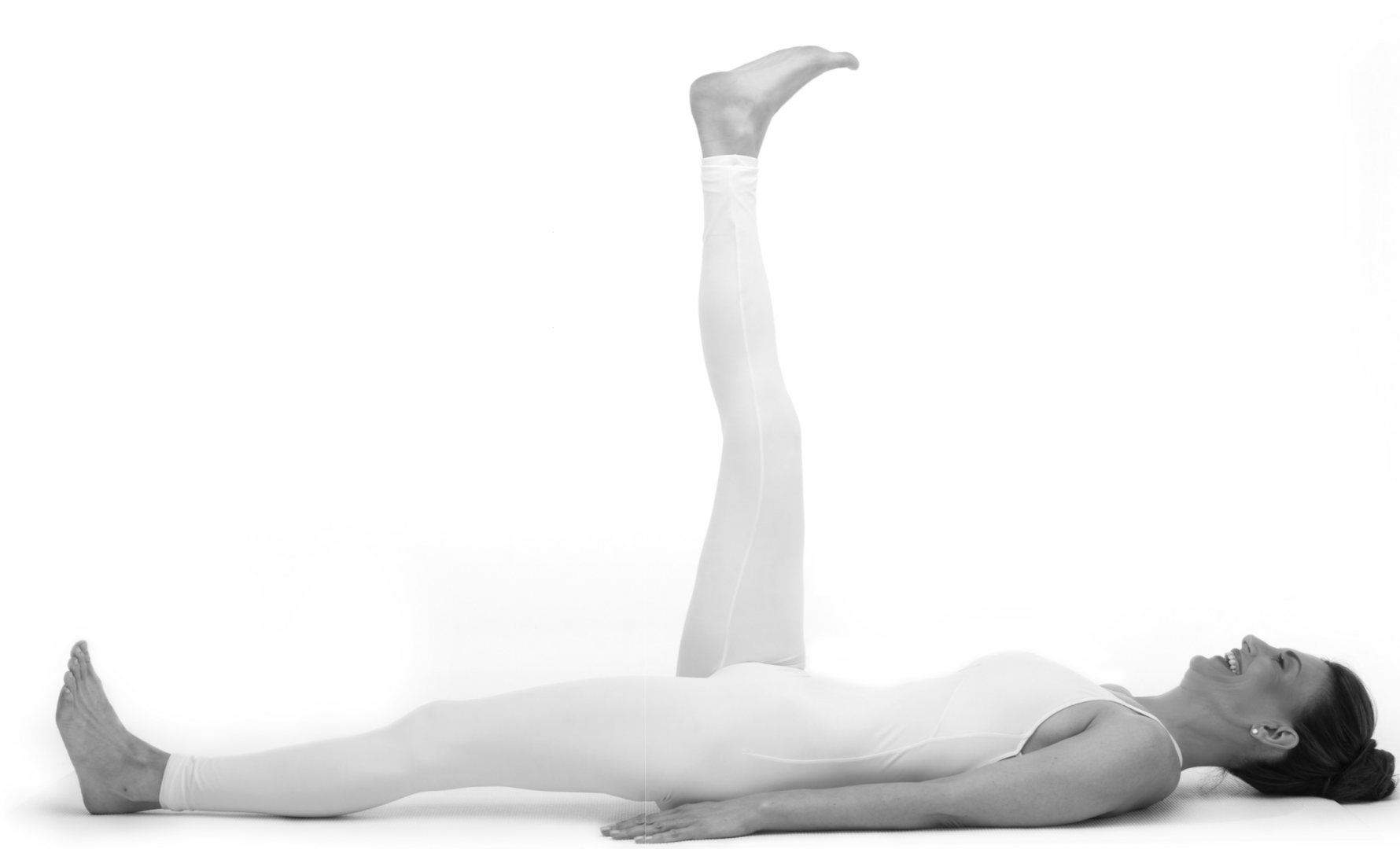
2 Come up to a seated position. Reach your arms up to sixty degrees on either side of your head, creating a V shape. Open your palms toward the sky and flop the hands open from the wrists. Breathe deeply and gaze at the tip of your nose. Feel yourself receiving the light of the divine while you surrender any barriers you hold inside. Let go. Continue for three minutes.
3 Bring your arms down, breathe gently, and relax. Feel yourself opening and allowing the full magnificence of your soul to shine.
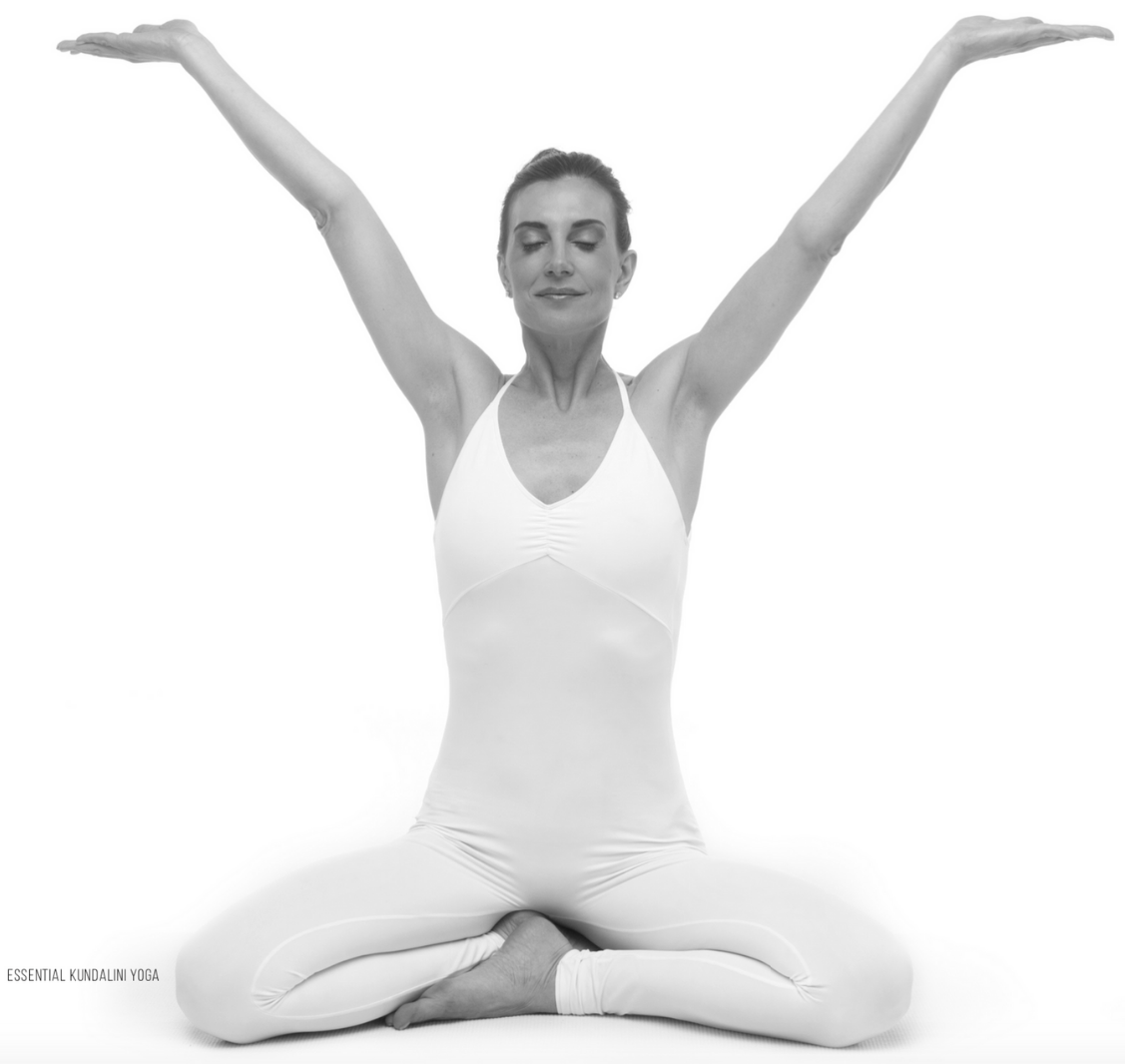
This is an excerpt from Essential Kundalini Yoga: An Invitation to Radiant Health, Unconditional Love, and the Awakening of Your Energetic Potential by Karena Virginia and Dharm Khalsa.
 Karena Virginia is a certified healer and registered yoga instructor who has taught in the Kundalini and Hatha schools for nearly 20 years. Before her career as a spiritual teacher, she worked in the entertainment industry as an actor and model. Karena’s work encourages us to connect with our own personal truth through love, compassion, inner beauty, and radiance.
Karena Virginia is a certified healer and registered yoga instructor who has taught in the Kundalini and Hatha schools for nearly 20 years. Before her career as a spiritual teacher, she worked in the entertainment industry as an actor and model. Karena’s work encourages us to connect with our own personal truth through love, compassion, inner beauty, and radiance.
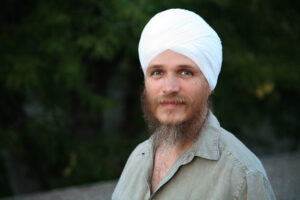 Dharm Khalsa is a board member of the Siri Singh Sahib Corporation, the nonprofit overseeing kundalini yoga in the US since founder Yogi Bhajan’s passing. Trained directly by Yogi Bhajan, for whom he was a personal assistant for eight years, Dharm has taught kundalini yoga since 1980. He lives in New Mexico.
Dharm Khalsa is a board member of the Siri Singh Sahib Corporation, the nonprofit overseeing kundalini yoga in the US since founder Yogi Bhajan’s passing. Trained directly by Yogi Bhajan, for whom he was a personal assistant for eight years, Dharm has taught kundalini yoga since 1980. He lives in New Mexico.
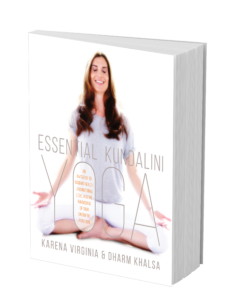
Learn More
Sounds True | Amazon | Barnes & Noble | Indiebound | Bookshop

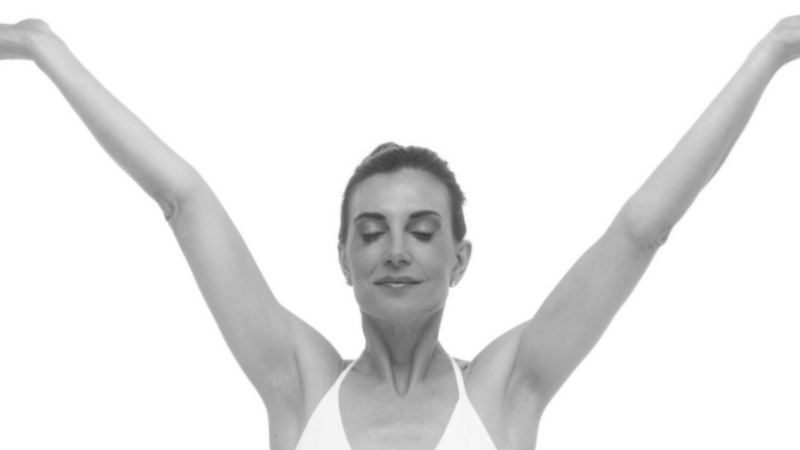






 Dharm Khalsa
Dharm Khalsa are feeling called in a new way to align their deepest soul callings with their external lives. There is a global energetic shift contributing to both a magnificent spiritual longing as well as a lack of ease, and the everyday stresses of modern life—along with changes in the Earth’s electromagnetic field—can make us feel strangely separate from our own authenticity. It can feel like standing on the shore of a whitewater river, looking across to the calm green peace on the other side, and wondering how to get back over there. We know there is something genuine that we are missing, but we need a bridge over the separation to return to our own peaceful heart.
are feeling called in a new way to align their deepest soul callings with their external lives. There is a global energetic shift contributing to both a magnificent spiritual longing as well as a lack of ease, and the everyday stresses of modern life—along with changes in the Earth’s electromagnetic field—can make us feel strangely separate from our own authenticity. It can feel like standing on the shore of a whitewater river, looking across to the calm green peace on the other side, and wondering how to get back over there. We know there is something genuine that we are missing, but we need a bridge over the separation to return to our own peaceful heart.





